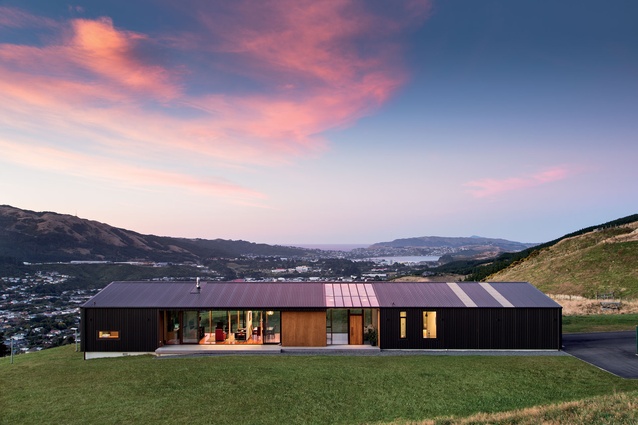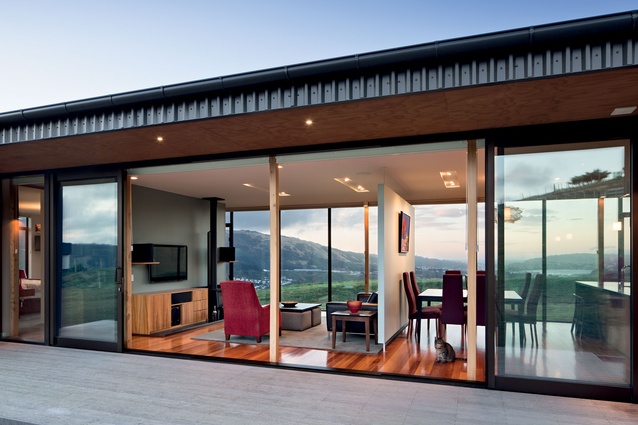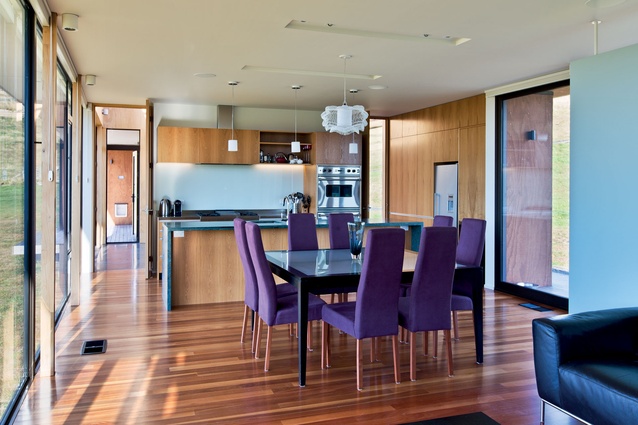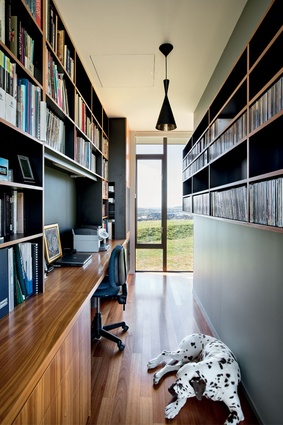Houses revisited: Hau Nui house
At first glance the simplicity of form of this house belies its inner workings. First published in 2013.
Hau Nui House‘s simple elongated shed form belies Tennent + Brown Architects’ talent for truly understanding the context of a project, in this instance: an area full of particularly horrid housing. To have installed a glamourous house into this aesthetically challenged suburb on the eastern hills of the Tawa Valley would have been, frankly, a crude display of ‘look at me, aren’t I so much better than you!’
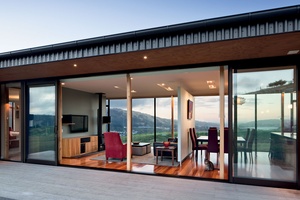
Instead, Hau Nui is essentially a simple yet elegant rural shed. Architect Hugh Tennent describes the concept for this elongated form as “a wind bar that stretches out to capture as much sun as possible in response to its exposed windswept site”. Concise north- and south-facing decks are carved into the form – for ad hoc use on Wellington’s occasional still and sunny days - and with views out to Porirua Harbour on the southern side. A ‘string of rooms’ extends across this narrow pavilion, allowing light to penetrate through from north to south and drawing the external environment indoors. A sheltered winter garden in the centre of the building also connects the inside with the outside and doubles up as an entrance lobby; Tennent calls this area the “hello/goodbye, sunny-and-warm moment in the middle of the building”.
The layout is designed to cater for a female owner and her dog, with the central focus around a flexible space for both sole use and entertaining guests, with space for an art collection. A revolving wall divides the dining and living area to ensure the space is cosy for the owner when she is alone in the house but which moves to the side as required, opening up the space for guests and creating an art gallery and walkway along the southern side. Behind the kitchen is a separate food preparation room, ensuring kitchen clutter is kept away from the dining area when it’s in entertaining mode.
The central living area and the winter garden create a division between the two bedrooms, which each occupy an end of the pavilion. The master bedroom and ensuite sit to the west, adjacent to a slim yet light-filled study while, at the eastern end, a guest bedroom opens out onto the north-facing deck. Next door, a plywood-lined internal garage, complete with a vertical green wall, has potential as a third bedroom in the future. Two panels of polycarbonate in the roof pull in light and break up the long, expansive roof externally.
Wood enlivens every space within the interior, creating “a warm and anchoring experience up on the hill,” says Tennent. Eucalyptus floors and macrocarpa veneer joinery are seen throughout, and a run of macrocarpa columns inside the glazing aid in populating the space and divide the large expanses of glass.
Externally, the glazing is further broken up by an insert and front entrance into the winter garden, both in wood, while the exterior form is clad in ironsand-coloured steel and nods to New Zealand’s
rural architectural history: to what architect and broadcaster David Mitchell described as “the elegant shed” in the 1984 documentary of the same name.
According to Wikipedia, “elegant things exhibit refined grace and dignified propriety” and Hau Nui displays this attribute artfully, while asking a question: ‘how would you make a shed home?’ This elegant shed is most certainly a home, even without the frills or folly; planning, space, light and context are all carefully considered, along with the details. There is certainly no place for white plastic guttering here.
Hau Nui celebrates this country’s distinctive rural approach to building on the landscape; here’s hoping that any new housing in the area sees it as inspiration.
Click here to see more Houses Revisited. And sign up to our email newsletters to receive Houses Revisited straight to your inbox.
Note: These are stories from our archives and, since the time of writing, some details may have changed including names, personnel of specific firms, registration status, etc.

